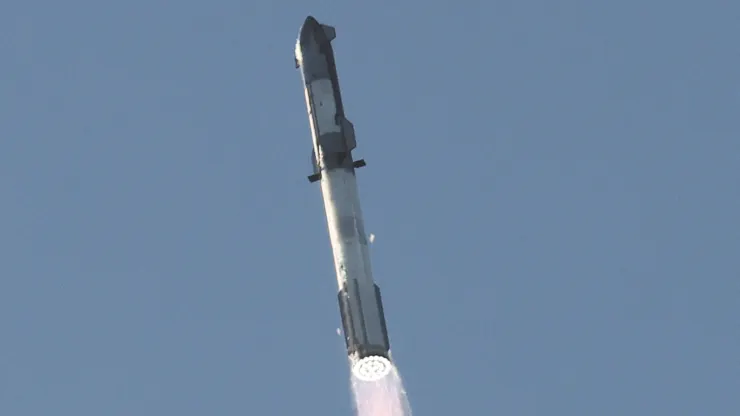In one sense, we’re now two weeks (and a holiday breather) on from SpaceX’s most recent test flight of a Starship prototype. In another sense, the test is ongoing and we’re still in the middle of a massive research and development effort.
One thing is clear: Starship is a spectacle. The rocket is a 40-story skyscraper, producing unprecedented amounts of power, and launching a few miles away from the viewing public. And, in addition to the company’s own livestreams of the launches, enthusiasts broadcast around the clock views of SpaceX’s activities in South Texas for thousands to online parse the movement of equipment and rocket parts.
The extremely public display, as well as SpaceX’s polarizing owner, is a double-edged sword for understanding Starship test flights. The dramatic views of the launch get people excited about Starship’s potential, but at the same time they open the company up to criticism.
One person’s “glorious success” is another person’s “massive failure.” Few call the Starship launches what they are: research.
SpaceX repeatedly emphasizes the “test” aspect of these flights and, indeed, from the R&D perspective of making progress, there were a number of successes: All 39 Raptor engines worked, the ground infrastructure seems to be in good shape, the “hot-staging” separation process meant the second flight made it further than the first, the rocket reached space, and the flight termination system (a.k.a., onboard safety method to intentionally self-destruct) appeared to trigger much more quickly than before.
Important steps forward, sure. Next stop, Mars? No.
Starship failed to complete the test mission’s profile by splashing down off the coast of Hawaii, falling short of a lower bar than even the most low-risk Falcon 9 launches for SpaceX. Starship’s booster ripped apart shortly after separation, and Starship itself was destroyed because it was underperforming – or, in SpaceX’s words, “a safe command destruct was appropriately triggered based on available vehicle performance data.”
Not great, given the flight time was only a fraction of the planned mission, but not the setback that images of a distant fireball may have you believe.
Readers, especially space enthusiasts, love to hear estimates of when Starship is going to land on the moon or send people to Mars. But the unfortunate truth is that those timelines are aspirational when talking about missions that rely on technology that’s firmly in the R&D stage. That’s a big reason why I regularly emphasize the comments by SpaceX leadership that Starship won’t be flying people until after completing “hundreds” of successful flights.
Starship needs to get to orbit, deliver satellites, demonstrate orbital refueling, safely re-enter the atmosphere and more before I start taking announcements like “landing cargo on the moon by so-and-so year” seriously, let alone fly people. In the middle of all those technological advancements, government regulators face allegations that SpaceX is moving too fast and breaking things, as well as criticism from the company that federal licenses aren’t getting approved quickly enough.
There are plenty of ways to read the tea leaves for how quickly the Starship program will play out. You can chart the momentum of Falcon 9 launches over the past 13 years and assume a similar trajectory for Starship. Or you could extrapolate the lag between initial estimates of when Starship would be ready to launch again (as early as June) to when it actually was ready to get back off the ground (October).
The reality is that Starship is still firmly in the R&D stage. Any purported timelines aren’t nearly as firm.

